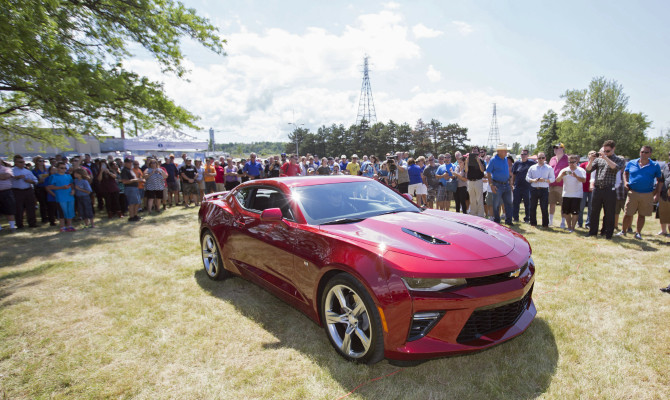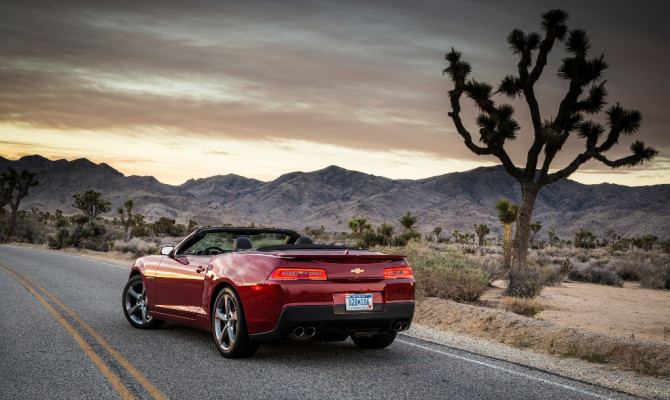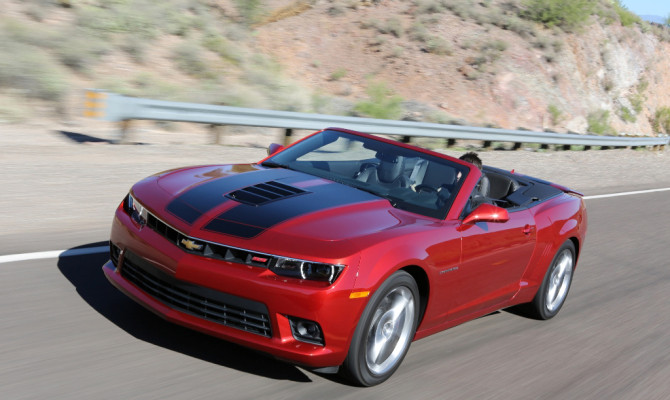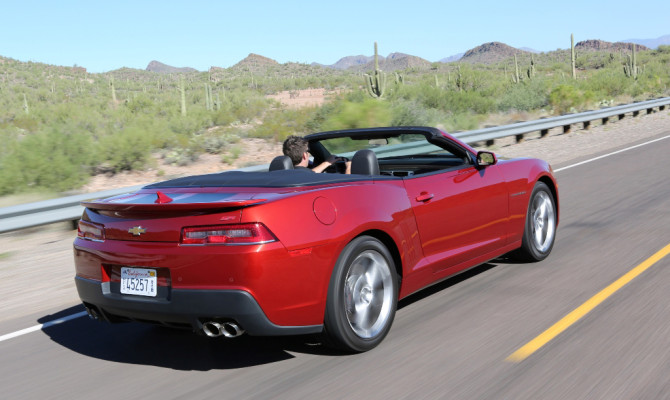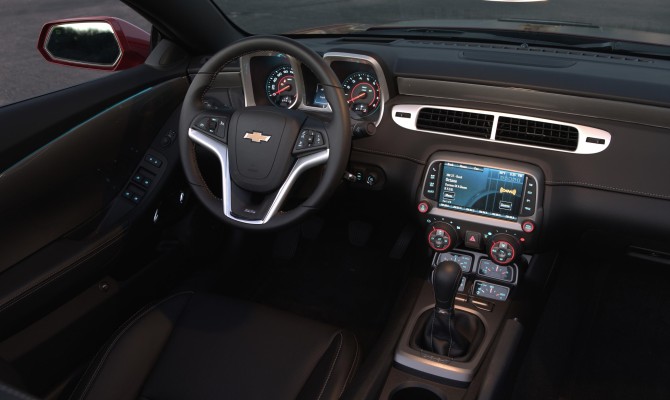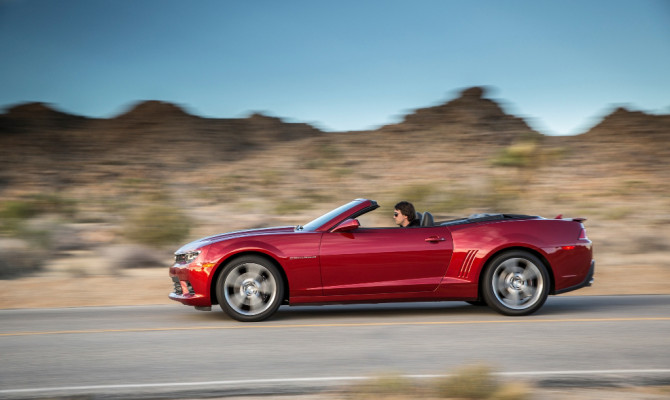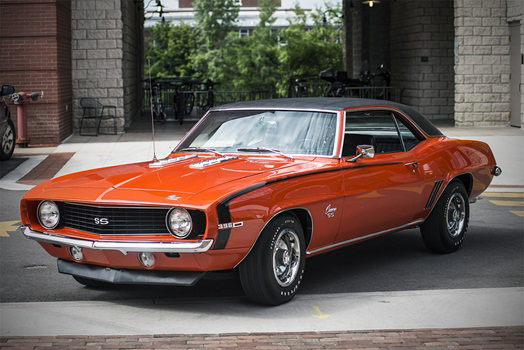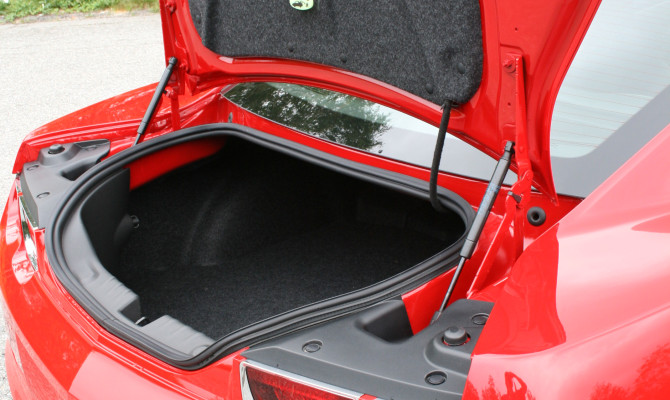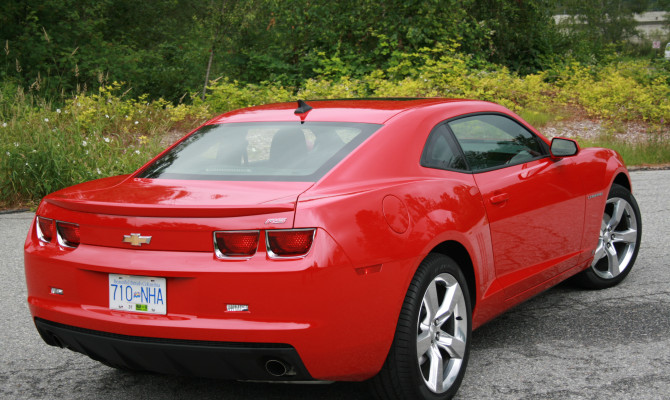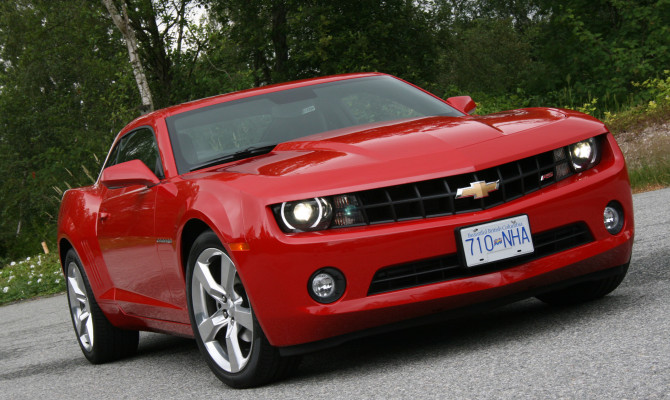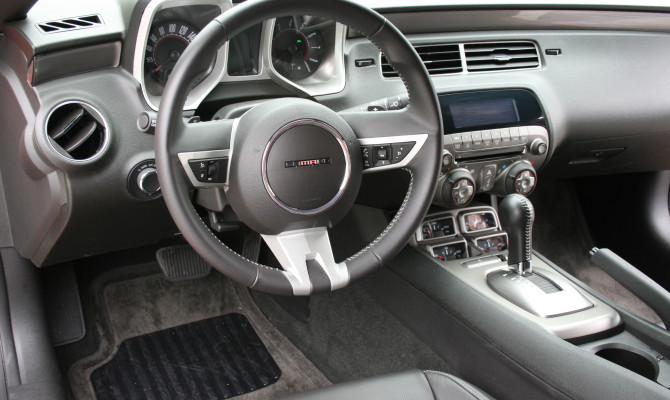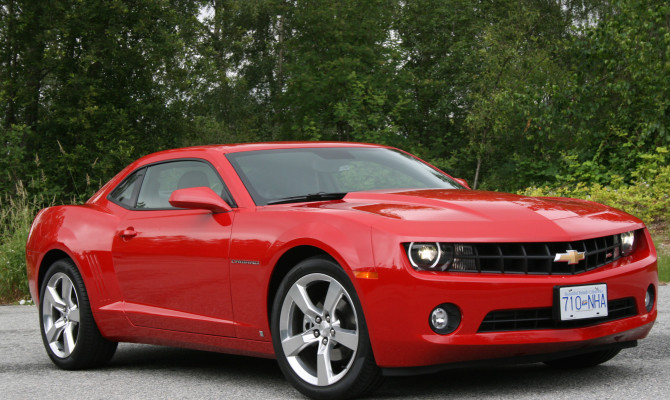“GM Canada continues to play an important role in the sixth-generation of the Chevy Camaro.”
The sixth-generation Chevrolet Camaro made its Canadian debut today at the 17th Annual St. Catharines Powertrain Show & Shine event in front of hundreds of Camaro owners and GM Powertrain fans.
The popular annual event is open to all “GM Powered” vehicles and includes a tour of the St. Catharines Powertrain facility, allowing Camaro owners and fans to see firsthand how an LT1 V-8 engine is assembled.
“We’re proud that GM Canada continues to play an important role in the sixth-generation of the Chevy Camaro, with the LT1 V-8 small-block engine being built right here at St. Catharines Powertrain,” said Steve Carlisle, president and managing director, General Motors of Canada. “Everything about the 2016 Camaro is focused on a fun, engaging driving experience, and the Canadian built V8 at the heart of the SS model delivers on that promise.”
The Camaro powertrain lineup includes an Ecotec 2.0L turbo, a next-generation 3.6L V-6 and the LT1 6.2L V-8. The new 2.0L turbo delivers the most efficient Camaro ever, with SAE-certified 275 hp (205 kW) and 295 lb-ft of torque (400 Nm) – and has a GM estimated fuel consumption rating of 7.8 L/100km highway and 0-96 km/h (60mph) acceleration well under 6 seconds.
The 3.6L offers an SAE-certified 335 horsepower (250 kW), giving it the segment’s highest specific output of any naturally aspirated V-6, while the LT1 is certified at 455 horsepower (339 kW) and 455 lb-ft of torque (617 Nm) – for the most powerful Camaro SS ever. The new engines are matched with six-speed manual transmissions and all-new eight-speed automatic transmissions.
Contact the writer at keith [dot] morgan [at] drivewaybc [dot] ca
“The Transformers edition is by far the best-recognized Camaro of all time and a sure-fire future collectible…”
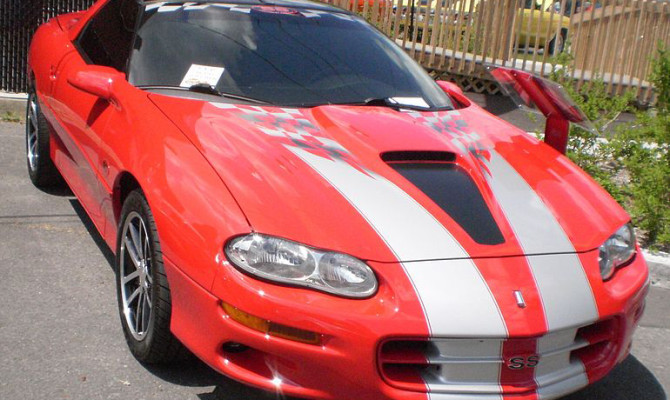
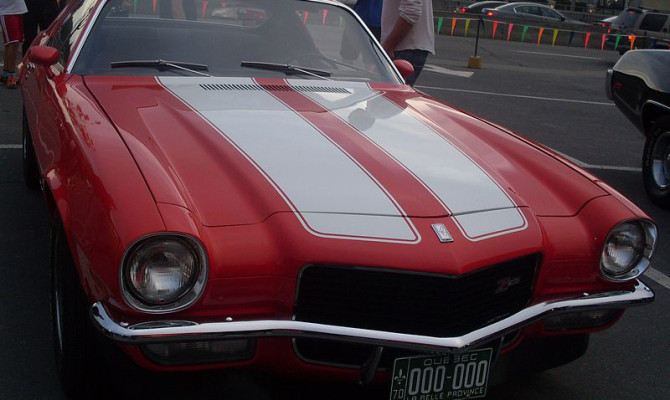
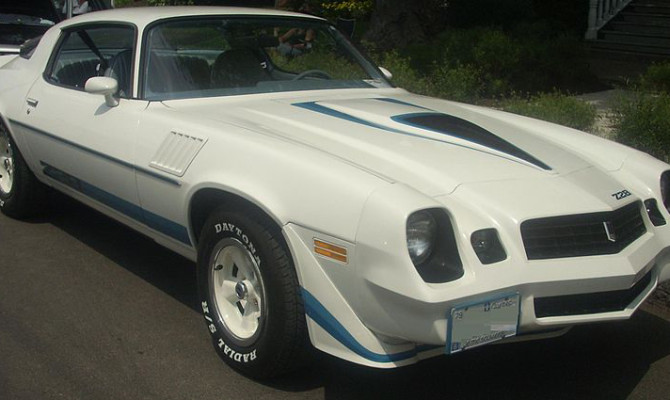
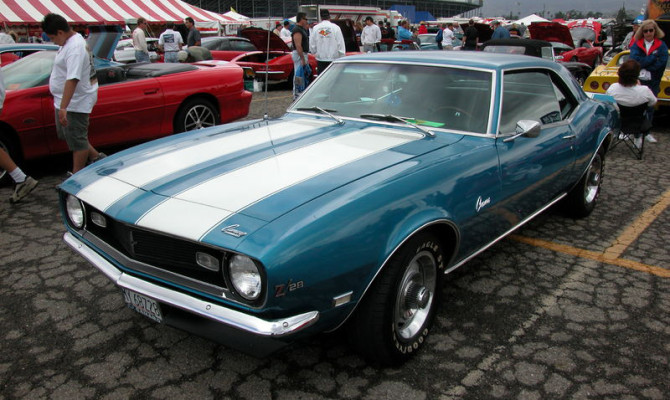
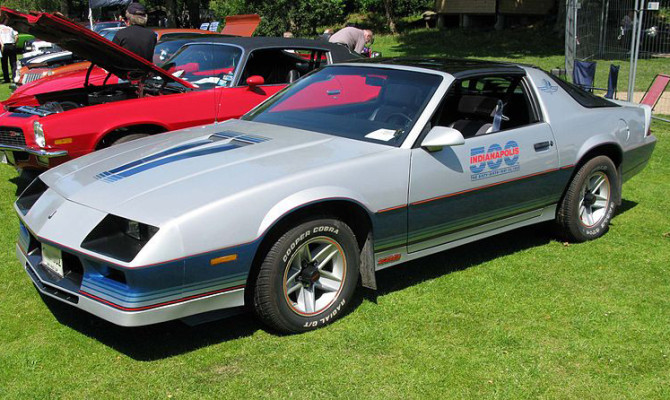
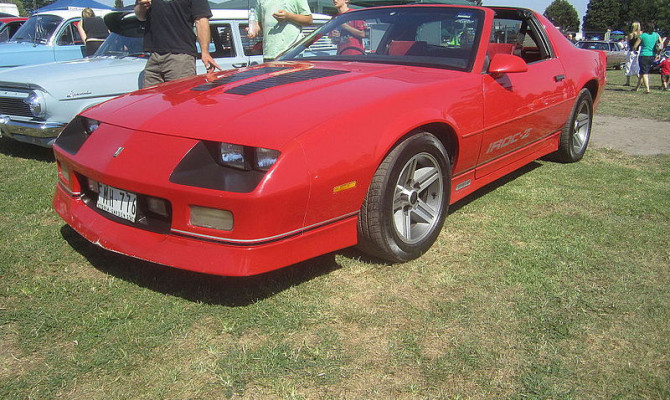
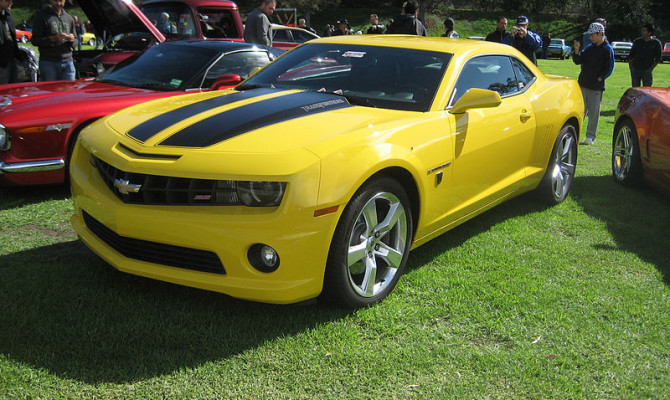
As we await the arrival of the sixth generation Chevy Camaro, let us look back at some favorite Camaros from each generation.
FIRST GENERATION
- 1967 Yenko Camaro – Don Yenko essentially ran a kick-ass speed shop out of his family’s decades-old Cannonsburg, Pa., Chevrolet dealership. Yenko replaced the car’s factory 396 V-8 with a Corvette L-72 427 that put out well over 400 gross horsepower. They went on to become among the most feared and (later) the most valuable muscle cars from the first golden age of automotive performance.
- 1968 Camaro Z/28 – If the big-block Yenko Camaro was a straight-line drag strip specialist, the Z/28 was the first-gen Camaro that you wanted to take on a road course. Its small-block 302-ci engine was essentially a 327 block with the crankshaft from the old 283 V-8. It made for one of the most entertaining and rev-happy pushrod V-8s of all time.
SECOND GENERATION
- 1970 Camaro Z/28 – The all-new second generation Camaro bowed for the 1970 model year complete with a fastback design and some styling cues borrowed from one of the best, the Ferrari 250 Short-Wheelbase Berlinetta of 1964 (Camaro would appropriate the name “Berlinetta” too, but we’re getting ahead of ourselves). The new car was an even better performer.
- 1979 Camaro Z/28 – The 1979 Z/28 looked fantastic with a new front spoiler and NACA duct hood. And while 175 hp doesn’t sound like a lot, the early 1970s change from SAE gross to net horsepower made it look worse than it was. The 1979 Z/28 remained a sharp handling and by-no-means slow car. Values have roughly doubled in the last five years.
THIRD GENERATION
- 1982 Camaro Z/28 Indy Pace Car – The ’82 pace car wasn’t about performance as much as looks. Nice examples are rare, but when they do show up, they are bargains, trading for well under $13,000.
- 1990 Camaro IROC- Z convertible – One of the biggest things to happen was the introduction of the first convertible since 1969 (courtesy of American Sunroof Corporation) just in time for the Camaro’s 20th anniversary. Fantastic examples still trade for under $20,000.
FOURTH GENERATION
- 1997 Camaro SS LT4 30th Anniversary SLP coupe – SLP Engineering (which stands for “Street Legal Performance”) followed the Yenko formula of 30 years earlier and grabbed one of the hottest Corvette engines (in this case the 1996 Grand Sport LT4). With wheel, tire and suspension upgrades to go with the balanced and blueprinted 330-hp LT4, the car cost about $18,000 more than the next hottest SS Camaro of the same model year. Buy one today for 50 grand.
- 2002 Camaro SS 35th Anniversary convertible – The F-body went out of production in 2002 (by then it was being produced only in GM’s Sainte-Thérèse, Quebec, plant) but at least it went out with a bang—the 325-hp SS went like stink.
FIFTH GENERATION
- 2010 Transformers Special Edition Camaro – Brilliantly announced at the 2009 San Diego Comic-Con, fewer than 2,000 were produced exclusively in Rally Yellow with black stripes and Autobot badges that were strategically placed. The Transformers edition is by far the best-recognized Camaro of all time and a sure-fire future collectible.
- 2014 Camaro Z/28 – Like the original Z/28 that cleaned up on road courses in the SCCA Trans Am series, the new Z/28 has track star written all over it. With extra-careful attention paid to light weight and aerodynamics, the car is able to put to good use on the track its huge Brembo brakes, Pirelli P Zero tires on 19” wheels and 500-hp, 7-litre V8- (that’s 427 cubic inches to Chevy big block fans).
Rob Sass is the vice-president of content for Hagerty Insurance. Hagerty is the world’s leading specialist provider of classic car and boat insurance. Learn more at hagerty.ca
“Fall can be an opportune time to snag a great deal on that dream-ride convertible you’ve always wanted…”
Buy now and park it until next spring!
With cooler weather ahead, fall can be an opportune time to snag a great deal on that dream-ride convertible you’ve always wanted to own, like the soft-top edition of Chevrolet Camaro.
Chevrolet introduced an all-new Camaro Coupe for the 2010 model year and the Camaro Convertible followed a year later. While it shares many similar styling details, this modern day rebirth of Camaro is longer and wider than the celebrated original ‘67, of the “muscle car” era. Big wheels (18-inch to massive 21-inch rim sizes) are an important design feature of new Camaro and it’s a little taller.
The 2011 Camaro Convertible was offered in just LT and SS trim levels. The LT comes with a lightweight and powerful “LFX” 3.6-litre V6 engine. It can generate 323 horsepower and is mated to either a six-speed manual transmission or a six-speed automatic. Revised and more realistic new fuel economy (auto) ratings are 12.9 L/100km in city and 8.1 L/100km on highway.
A potent 6.2-litre V8 engine (from the Corvette) lies under the hood of Camaro SS. When paired with a six-speed manual it’s tuned to pump out 425 horsepower. A 400 horsepower edition of this same engine (with more low-speed torque and a fuel saving cylinder deactivation system) is paired with a six-speed automatic transmission. The revised fuel rating for Camaro SS (auto) is 14.9 L/100km in city and 9.5 L/100km on highway.
There is a key engineering difference between Chevrolet’s Camaro and, its nemesis, the Ford Mustang. While both vehicles send gobs of engine power to the rear wheels, Mustang has a rigid rear axle and Camaro has a more sophisticated independent link system with half-shafts and coil springs attached to an isolated sub-frame. In theory, Camaro should be a better riding and handling sports car but that debate rolls on.
A limited edition high-performance Camaro ZL1 arrived in 2012. It came with a supercharged 6.2-litre V8 engine that can produce an outrageous 580 horsepower … and it has obvious collector car potential. A special 45th Anniversary Package was also offered that year. Other than some packing revisions and new colour choices, there were no significant changes to the 2013 or the 2014 model year editions of Camaro.
While it may be hard to find practical reasons to buy a sports car like Camaro, it did make it on the Consumer Reports list of “recommended” good, reliable cars to buy. Camaro Convertible is also even less practical and more expensive than the Coupe. Then again, it’s a hoot to drive, especially with the top down!
VIDEO: Transformer Camaro Commercial – Chevrolet
**********
Price Check: 2011 – 2014 Chevrolet Camaro Convertible (September 2014)
Year Edition Expect to Pay Today
2011 LT $22,000 to $26,000
2012 LT $25,000 to $29,000
2013 LT $28,000 to $33,000
2014 LT $33,000 to $38,000
____________________
*Prices vary depending on a used vehicle’s condition, mileage, usage and history. A complete mechanical check should always be performed by a reliable auto technician prior to purchase.
**********
Safety Recalls: 2011 to 2014 Chevrolet Camaro:
2010 to 2014: There is a risk that some drivers may bump the ignition key with their knee and unintentionally move the key from out of the “run” position. Engine power, power braking and power steering would be affected, if this were to occur. Dealers will remove the key blade from the original flip key/transmitter assemblies and provide two new keys and key rings for every original key.
2011/2012: In vehicles equipped with power height adjustable front seats, a bolt securing the adjuster mechanism may loosen and could fall out, causing the seat to suddenly drop. Dealers will replace the bolt.
2012: The primary or secondary stage of the driver’s airbag may not deploy during a crash. Dealers will replace the steering wheel airbag coil (This is a condensed series of recalls).
2013: The airbag warning labels may not be permanently affixed to sun visors. Owners sent instructions on how to inspect labels, or may have the inspection performed at a dealer. Where labels are found to be defective, the sun visors will be replaced.
Contact: bob [dot] mchugh [at] drivewaybc [dot] ca
Chevrolet has certainly listened to their customers and in the Impala; it has given drivers a vehicle that has flair, as well as potency…
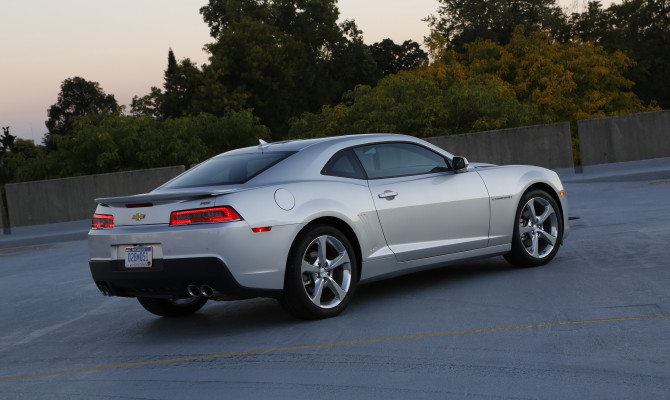
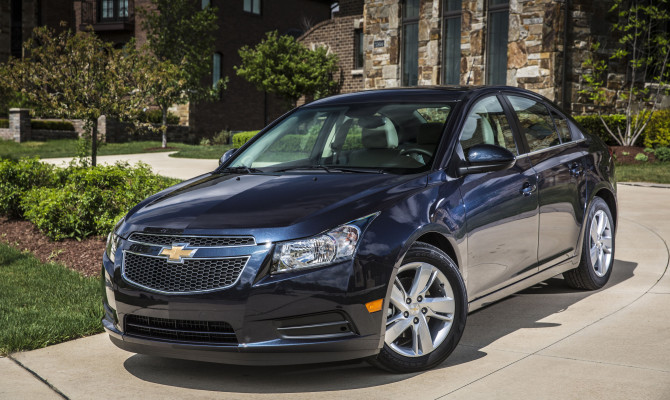
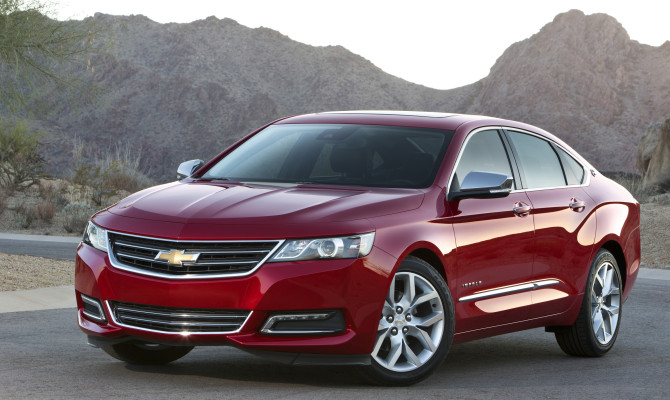
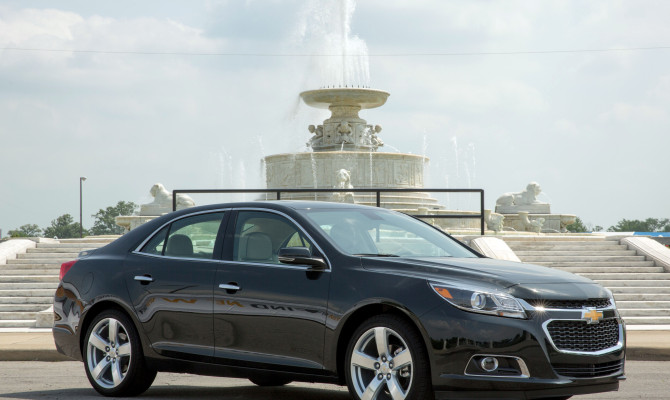
The model year 2014 is already in full swing for Chevrolet as it rolls its products into the Vancouver International Auto Show.
Many of the new and revamped products are already in dealerships so let’s take a look at what’s especially notable for this year.
Cruze Diesel
The popular selling compact from Chevrolet, the Cruz, now comes in an even more efficient setup: the Cruze Diesel.
While the diesel model was launched last summer, it bears a 2014 designation.
Under its hood is a 2.0L turbo-diesel that packs in 151 horsepower and 264 lb.-ft torque. Yes, it has that much torque and is most impressive.
According to the Chevrolet, it has a 0-96 km/h (60 mph) performance of 8.6 seconds, “which is better than the Volkswagen Jetta TDI automatic and competitive with German diesel cars that dominate the North American market.”
In addition to that, it receives an estimated fuel consumption of 4.2L/100km on the highway and 7.5L/100km in the city.
While the Cruze diesel had already been available in Europe, the proven engine needed to be adapted to North American emissions ratings.
It comes standard with a six-speed automatic transmission and 376.6L trunk space.
It has an MSRP of $24,945 plus $1,550 destination freight charge.
Impala
Chevrolet’s flagship sedan is all new for the 2014 model year. Released in 2013, this five-passenger vehicle can certainly hold its own in a segment whose competitors are getting stronger and stronger.
Among its redeeming new features, an all-new exterior design. I think it looks great. Having had the opportunity to take it for a test drive, Chevrolet has certainly listened to their customers and in the Impala; it has given drivers a vehicle that has flair, as well as potency.
Its cabin/interior also received a major overhaul and the result is pleasing to the eyes and to the touch.
The 2014 Impala is offered with three engine choices, including two four-cylinder powertrains and a 3.6L V6.
Output for the 3.6L V6 is rated at 305 horsepower and 264 lb.-ft. of torque (358 Nm). That is the highest horsepower output in the segment from a naturally-aspirated V6 engine.
The Ecotec 2.5L is part of a new family of four-cylinder engines developed with increased efficiency and greater refinement. It is rated at 196 horsepower and 186 lb-ft of torque
The Impala’s Ecotec 2.4L engine with eAssist provides electrical assist in certain conditions to help save fuel. It is rated at 182 horsepower.
The 2013 model year brought forth an all-new Malibu. That said, not much has changed for 2014, but that doesn’t mean it didn’t get a few enhancements.
For example, there’s now a fuel-saving start-stop technology added to the standard model, rear knee room improved by 1.25 inches (31.7 mm) and chassis and suspension developments enhance drive experience.
That’s on top off the overhauled Malibu, on the inside and out.
For those diehard track day fans who have been waiting for an even more performance inspired Camaro, the wait is over. Almost.
For 2014, the Z/28 makes its debut.
All 2014 Camaro models feature a revised exterior design that integrates high-performance aerodynamics for more efficient cooling and stability at high speeds. However, the new Camaro Z/28 adds features like a full aerodynamics package that creates downforce at speed, which helps make it the most track-capable offering in Camaro’s history.
Alongside its aerodynamic prowess, under its hood is a mechanical wonder. Its 7.0L, LS7 V8 hand-assembled engine was co-developed with Corvette Racing to make it as potent as possible.
Its monster engine produces an estimated 500 horsepower and 470 lb-ft of torque.
With those figures on paper, don’t expect amazing fuel results!
And just like it takes an experienced driver to put it through its paces, your bank account will most likely need to be seasoned, too! It has an MSRP of $77,400.
If you get to the show, all the GM brands, including Chevrolet, are well-represented.
Amazing as it may seem, the 2013 base six-cylinder engine, at 323 hp, puts out more ponies than the most powerful small-block V-8 in the original car…
**********
One of North America’s favourite pony cars, the Camaro has an interesting past with more than a few buried facts and secrets hiding just below the radar.
Here are five of my favourites:
1. The Camaro was almost called the Panther…
It took a while for Chevrolet to come up with a final name for the Camaro. For quite some time it was referred to internally as the Chevrolet Panther. In end, Chevy’s preference for names beginning with a “C” won out, and the Panther name died as part of an elaborate PR campaign.
2. The Camaro was actually Canadian…
Like William Shatner and Michael J. Fox, the seemingly All-American Camaro was actually stealth Canadian.
From 1993-2002, the Camaro and its twin, the Pontiac Firebird, were built in St. Thérèse, Quebec, a Montreal suburb.
3. “Camaro” means nothing…
The name was actually a contrived moniker, much like “Camry” and “Corolla.” Although some claim that it is French slang for “friend,” neither the GM product people (nor most French-speakers, for that matter) are aware of this.
4. It “outpaced” the Mustang…
Although the Camaro came 2½ years after the Mustang and was often outsold by the Mustang, it has a healthy lead in the Indianapolis 500.
The Camaro has been the official pace car at Indy six times, versus just three for the Mustang. Only the Corvette (12) has paced more 500s than the Camaro.
5. Current Base V-6 Puts V-8s of old to shame…
Amazing as it may seem, the 2013 base six-cylinder engine, at 323 hp, puts out more ponies than the most powerful small-block V-8 in the original car (295 hp). In fact, it probably makes nearly as much power as the fiercest big block V-8 of 1967, the 396 cubic inch, 375 hp.
In modern “net horsepower” (measured with mufflers and accessories hooked up), the new six and the old big-block V-8 are probably just about even.
Hagerty’s employees just recently finished a full restoration of a 1969 Camaro SS. To find out more about the restoration process or where the Camaro is now please visit our Comeback Camaro page on Hagerty.ca.
Rob Sass is the vice-president of content for Hagerty Insurance. Hagerty is the world’s leading specialist provider of classic car and boat insurance. Learn more at hagerty.ca
The Camaro’s trunk is also on the small side but all is forgiven when you step on the gas pedal and hit the road…
The 2010 model year Chevrolet Camaro was designed in the USA, engineered in Australia and built in Canada.
In addition to a very attractive return-to-roots styling exercise, this Camaro boasts a sophisticated rear-drive chassis, two powerful engine choices and lots more.
Initially, the new Camaro came in LS, LT and SS trim levels. The base engine is a Cadillac sourced direct-injection 3.6-litre V6. It can generate 304 horsepower and is mated to either a six-speed manual transmission or a six-speed automatic.
A more potent 6.2-litre V8 engine (from the Corvette) lies under the hood of the SS. When paired with a six-speed manual it can pump out 425 horsepower. A 400 horsepower edition of this engine, with a fuel saving cylinder deactivation system, came paired to the optional six-speed automatic transmission.
Chevrolet claimed the Camaro V6 can reach 100 km/hour in just 6.1 seconds and SS can do it in a tire blistering 4.7 seconds, which is super-car territory. Fuel consumption is also less (or better) than you might expect and both engines can run on regular gasoline. The Camaro V6 (auto) is rated at 11.4 L/100km in city and 6.7 L/100km on highway. And the SS (auto) is rated at 13.2 L/100km in city and 7.9 L/100km on highway.
Compared to the original ’67 this Camaro is longer, wider and taller. Bigger wheels, which came in 18-inch to 21-inch rim sizes, accounted for much of the height increase. Regardless of the rim size originally ordered, the overall height and tire-to-body gap remained the same, so that it doesn’t detract from the overall look of the car.
A major difference between Chevrolet’s Camaro and, its rival, the Ford Mustang is the rear axle and suspension setup. Mustang has a rigid rear axle and the Camaro uses a more sophisticated independent link system with coil springs attached to an isolated sub-frame. It should result in a better riding and handling car, but that debate rolls on.
A driving drawback that’s common to many sports cars is rear visibility and small side mirrors don’t help matters. The Camaro’s trunk is also on the small side but all is forgiven when you step on the gas pedal and hit the road.
A Camaro Convertible was introduced for the 2011 model year. Other significant changes included an eight-horsepower output increase for the base 3.6-litre V6 and a “Head-Up” dash display was offered (on 2LT and SS trim levels).
The base engine was also upgraded to a new “LFX” 3.6-litre, V6. Although its displacement is the same as the original, this new engine is lighter and more powerful. A limited edition high-performance Camaro ZL1 arrived in 2012. This car has a supercharged 6.2-litre V8 engine that can produce an insane 580 horsepower … and is collector car certainty. A special 45th Anniversary Package was also offered on Camaro and Camaro SS.
The Chevrolet Camaro made it on the Consumer Reports “Recommended’ list of good, reliable cars to buy. Great to look at and a hoot to drive, even the V6 engine editions of this Camaro have more than enough power for most drivers.
Used Price Check: 2010 to 2012 Chevrolet Camaro (September 2013)
Year Edition Expect to Pay
2010 Coupe LT $18,000 to $22,000
2011 Coupe LT $21,000 to $25,000
2012 Coupe LT $25,000 to $29,000
Prices vary depending on a used vehicle’s condition, mileage, usage and history. A complete mechanical check should always be performed by a reliable auto technician prior to purchase.
Recalls on the 2010 to 2012 Chevrolet Camaro:
2012 – The primary stage of the driver’s airbag may not deploy during a crash (where deployment is warranted). Dealers will replace the steering wheel airbag coil.
2010 – On vehicles equipped with a V8 engine, the positive battery cable may contact the starter motor housing, which could cause chafe damage to the cable insulation. This could create an electrical short, which can result in a no start condition, cause the engine to stall without the ability to restart, or cause an engine compartment fire. Dealers will reroute the positive battery cable to ensure adequate clearance.
Contact:
Recent Comments
- { Enjoyed your Forest of Bowland in the BMW X5M, particularly the photo of the BMW in front of the main part of Stonyhurst College where... }
- { Bantam designed the Jeep, not Willy's or Ford. The American military gave the original Bantam prototype to Willys and Ford to copy. There is plenty... }
- { All Escalades come with a 6.2-lilter V8 engine that produces 420 horsepower. A six-speed automatic is the only transmission offered and drives the rear wheels.... }
- { Alexandra is an excellent journalist. }
Popular Posts
- Journey to a ‘Sparkling’ Luxury Okanagan Resort “Four lucky readers will put a Dodge Journey’s weekend-...
- The Need For Speed: Hike Those Highway Limits More than half of those polled believe the province sho...
- Drives-U-Crazy… Erratic drivers. An early morning drive from Kelowna to Vancouver is nor...
- Readers Respond: The Pros and Cons of Increasing B.C. Speed Limits Increasing the speed limits will only increase risk to...
- Honda CR-V Review: The Compact Crossover To Get Things Done The CRV is a very stylish and aerodynamic crossover veh...


